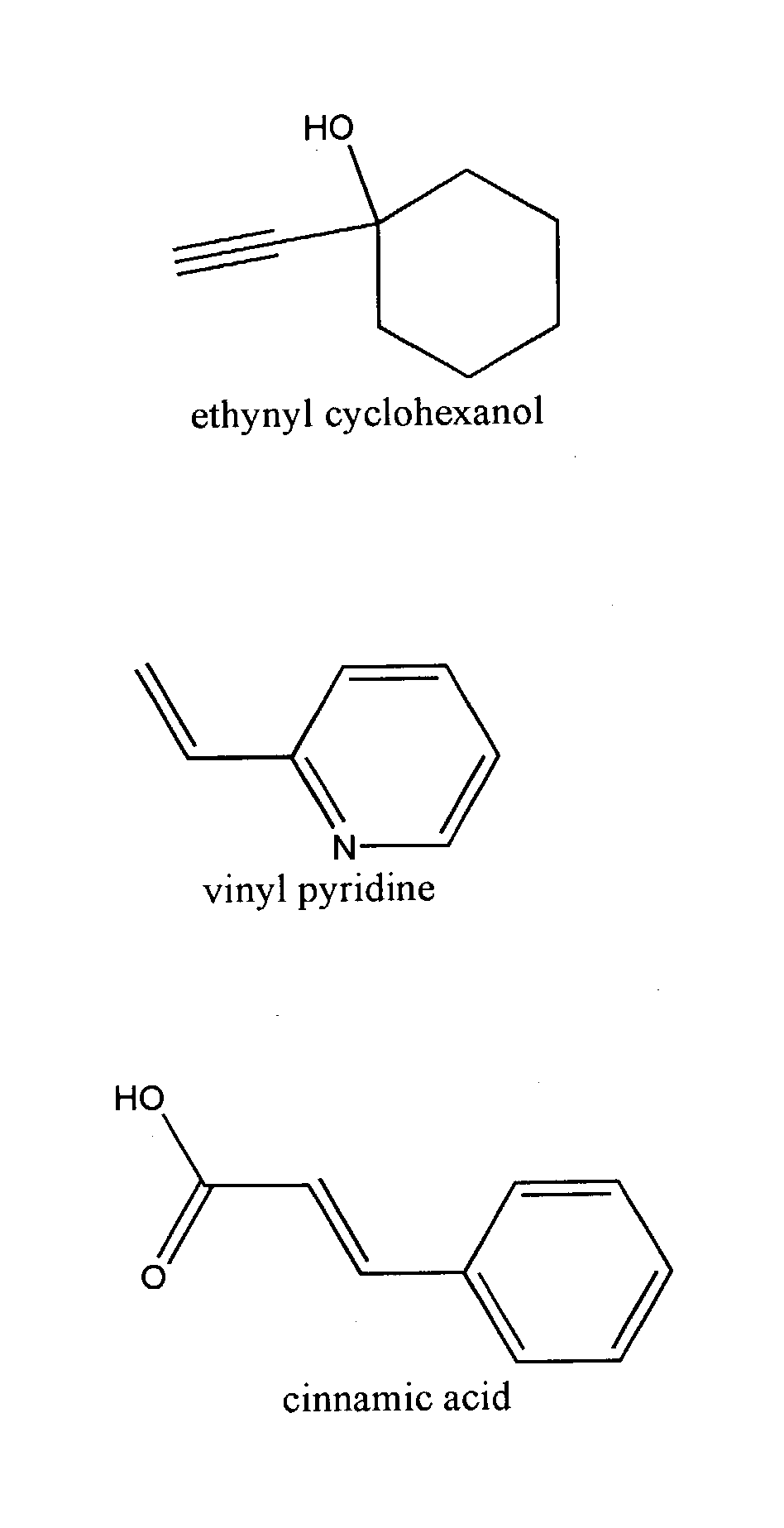Process for improving the adhesion of polymeric materials to metal surfaces
a polymer material and metal surface technology, applied in the field of printed circuits, can solve the problems of inherently less effective, essentially counterproductive, and susceptible to delamination in subsequent processing of cured multilayer composites or coatings, and achieve the effect of improving the adhesion of metal surfaces and reducing the amount of copper etched
- Summary
- Abstract
- Description
- Claims
- Application Information
AI Technical Summary
Benefits of technology
Problems solved by technology
Method used
Image
Examples
example 1
[0057]An Example Bath of the following composition was made up:
[0058]4.5% by volume concentrated sulfuric acid
[0059]1.2 grams / liter benzotriazole
[0060]0.7 g / l 3,5-dinitrosalicylic acid
[0061]0.15 g / l cinnamic acid
[0062]15 mg / l sodium chloride
[0063]10 mg / l molybdic acid
[0064]1.1% by volume of 50% hydrogen peroxide
[0065]A copper surface processed through this bath yielded a uniform brown surface. Approximately 25 μin of copper were removed during processing.
example 2
[0066]An Example Bath of the following composition was made up:
[0067]2.0% by volume concentrated sulfuric acid
[0068]1.2 grams / liter benzotriazole
[0069]0.4 g / l 3,5-dinitrosalicylic acid
[0070]0.1 g / l cinnamic acid
[0071]15 mg / l sodium chloride
[0072]10 mg / l molybdic acid
[0073]1.2% by volume of 50% hydrogen peroxide
[0074]A copper surface processed through this bath yielded a uniform purple / brown surface. Approximately 23 μin of copper were removed during processing.
example 3
[0075]An Example Bath of the following composition was made up:
[0076]5.0% by volume concentrated sulfuric acid
[0077]1.2 grams / liter benzotriazole
[0078]0.6 g / l 3,5-dinitrosalicylic acid
[0079]0.8 g / l ethynyl cyclohexanol
[0080]15 mg / l sodium chloride
[0081]10 mg / l molybdic acid
[0082]1.1% by volume of 50% hydrogen peroxide
[0083]A copper surface processed through this bath yielded a slightly nonuniform purple surface. Approximately 25 μin of copper were removed during processing.
PUM
| Property | Measurement | Unit |
|---|---|---|
| Concentration | aaaaa | aaaaa |
| Concentration | aaaaa | aaaaa |
| Concentration | aaaaa | aaaaa |
Abstract
Description
Claims
Application Information
 Login to View More
Login to View More - R&D
- Intellectual Property
- Life Sciences
- Materials
- Tech Scout
- Unparalleled Data Quality
- Higher Quality Content
- 60% Fewer Hallucinations
Browse by: Latest US Patents, China's latest patents, Technical Efficacy Thesaurus, Application Domain, Technology Topic, Popular Technical Reports.
© 2025 PatSnap. All rights reserved.Legal|Privacy policy|Modern Slavery Act Transparency Statement|Sitemap|About US| Contact US: help@patsnap.com

